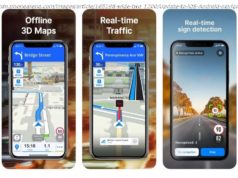The silly season continues. Speculators are piling into the cryptocurrency space in the hopes of–sometimes very literally–making money fast. As I write this..
The silly season continues. Speculators are piling into the cryptocurrency space in the hopes of–sometimes very literally–making money fast. As I write this Ethereum’s value has halved since June but is still 20x since January. Litecoin is up 12x since then. Even Bitcoin has tripled, again. It seems like everyone now has an opinion on, and a position in, cryptocurrencies.
And hey, if you want to speculate, and casinos seem too sedate and controlled to you, then more power to you, jump right in. But for those of us who are interested in the technology, not the money — who think that blockchains are primarily interesting because, unlike most modern technology, they de centralize power — so far this has actually been a mostly disheartening year.
This has been the year of the ICO, in which an astonishing amount of money has been raised by the issuance of new cryptocurrencies in exchange for existing ones, the value of which is then inevitably measured in… US dollars, which says something. Tezos, which is basically “a more flexible Ethereum” (just as Ethereum was, to vastly oversimplify, “a more flexible Bitcoin”) raised ~$230 million. Bancor, which “enables anyone to create a new type of cryptocurrency, ” raised ~$150 million. Status, “an open source messaging platform and mobile browser to interact with decentralized applications that run on the Ethereum Network, ” raised $95 million. TenX, “Making Cryptocurrencies Spendable Anytime Anywhere, ” raised ~$80 million.
Do you notice anything that these massive fundraises have in common? That’s right; they’ re projects which benefit cryptocurrencies which manipulate and/or hope to supersede other cryptocurrencies. Much, if not most, of the big-money high-profile ICOs this year have been self-referential Crypto Inception. They’ re built on the (often unquestioned) assumption that decentralized blockchain apps will be widespread and enormously valuable, and therefore, blockchain tooling and infrastructure will be as well.
That implicit assumption sounds nice; it even sounds plausible, if you squint the right way and accept a few uncomfortable assumptions; but — uh — tooling and infrastructure for what, exactly? Bitcoin has fought its way into a valuable and important niche as a widely recognized, fairly widely used, decentralized currency and alternative to gold, which is remarkable… although as pointed out by Adam Back, CEO of Blockstream, crypto OG, and generally extremely perspicacious guy, the rise of other cryptocurrencies is arguably a threat to the whole notion of blockchains-as-currency:
When you get beyond Bitcoin, though, and more specialized currencies such as ZCash and Monero, what exactly are blockchains being used for? Where is the colossal value implied by these eye-popping valuations for ICOs for blockchain tools and infrastructure?
Well. Uh. About that.
That’s from a pessimistic but trenchant analysis by Lyle Cantor a whopping six weeks ago. It does not seem any less accurate today. Consider the forthcoming Filecoin ICO; then consider “ the analysis Filecoin doesn’ t want you to read.” Does this still seem like a healthy market to you? Does it really?
(Aside from this parenthetical I’ m not even going to talk about the millions of dollars’ worth of currency that has been stolen or outright lost because of bugs and/or insecure code. I’ m actually not too concerned about that in the long run. Every new technology is ridden with security flaws early in its lifespan. Think of cryptocurrencies as a technology with massive built-in bug bounties.)
Most blockchain apps we’ ve seen to date which aren’ t focused on the cryptocurrency space itself address the same few areas: namespaces, identity management, decentralized storage, decentralized cloud computing, and prediction markets. What concerns me is that it remains at best highly unclear whether a decentralized solution is better in any of these areas than a centralized one, for anything more than a small minority of users. As I’ ve said before: when it comes to consumer apps, blockchains are the new Linux, not the new Internet.
The calls for a glorious fully-tokenized fat-protocol future are stirring. I want to believe. But when the rubber hits the road, and they consider concrete examples, these glorious futures tend to come to a screeching halt. They talk of value being shared among all users of the network, instead of accruing to a single company … but they tend to elide the fact that such a network would be slower, more complex, and harder to use, in exchange for very little end-user value.
Consider Facebook. Imagine that Facebook was a decentralized social network that returned fully half of its revenue (not profits, revenue) to its users. That means the average Facebook user would receive … a whole US$1 a month. That is not enough to make people want to use a clumsier, slower Facebook that innovates far less rapidly. It isn’ t enough for decentralized networks to be more equitable. They have to be better. Or they have to do something that centralized networks cannot.
Note that thus far I’ ve been talking about public, permissionless, fully decentralized blockchains. “Private” blockchains are a different story. Their obvious application there is to replace the multiple systems involved in any given type of financial transaction with a single shared blockchain. For instance: any given credit card transaction requires systematic coordination between five different parties, as entertainingly related in this recent video from noted cryptocurrency champions Andreessen Horowitz. It would be simpler, more efficient, and presumably cheaper for all concerned, to use a common shared datastore such as–you guessed it–a blockchain.
But as for new applications of the technology…
— well, thankfully, largely orthogonal to the crypto/ICO bubble, a few have in fact arisen. There is Brave’s Basic Attention Token, which is nothing less than an entirely new business model for online advertising. There is Grid+, which “leverages the Ethereum blockchain to give consumers direct access to wholesale energy markets”; it’s early days yet, but the interesting thing here is that the energy market is, when you consider the growth of home solar, also permissionless and decentralized; it seems like a natural fit.
Most interesting of all, there are multiple initiatives trying to give Ethereum’s “smart contracts” — code which runs to conditionally perform transactions, or not, depending on certain criteria — the actual force of law.






